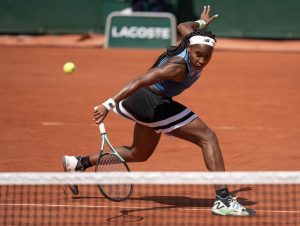Tennis may have experienced something of a golden age over the past decade-and-a-half, with prize money rocketing up, in no small part due to the presence of some of the greatest players of all time. But now tennis has to change. Because the suspension of the season due to the coronavirus pandemic has laid bare, once and for all, the sport’s biggest problem. Far too few are able to make a living playing tennis.
The Problem
Sadly, players ranked outside the lucrative top 100 have always struggled to scrape by. Basic expenses like food, travel, and lodging typically total $75,000 per year, yet annual incomes above $120,000 for players on the Challenger and ITF circuits are rare, given the meagre prize money at that level. So whilst top players worry about which coach or physio might take them to the next level, lower-level players have to count each penny in the hopes of one day rising high enough to earn some real money.
Of course, that isn’t to say that the problem with tennis is its gaping disparity in prize monies at the upper and lower levels. Indeed, the top players arguably deserve their fortunes. It’s not easy perfecting your game. No, instead, the issue with our sport is that at its lower levels, where future stars are supposed to develop their skills with singular focus, players are offered distractingly unliveable pay. And now that the suspension of the season has left them flat-footed with no savings to fall back on, the calls for radical change are getting louder.
A Call for Change
The most prominent recent outcry has been from Serena Williams’ long-time coach, Patrick Mouratoglou. “STOP,” he passionately tweeted on April 7. “We can’t leave lower-ranked players behind anymore. This is not right. Tennis needs to change. Let’s use this free time to start a discussion.” Hear, hear! And for a blueprint for change, perhaps we should look no further than… China!
An Outline of a Potential Solution
In the interest of systematically helping tennis’s lower-ranked players, I suggest every federation takes from China the following elements of its national tennis program:
- Contract up-and-coming players to provincial teams and provide them with a base salary, expenses, and top-drawer training.
- Require as part of their contracts that, in addition to playing on the lower-level tour, players:
- Represent their teams occasionally in national tournaments.
- Contribute regularly to the welfare and advancement of their teammates.
- Request agreement that when a player leaves the lower levels and makes it big, the government will be allowed to participate in and partially benefit from any endorsement negotiations the player may land.
- Rescind a contract if a player breaks it in any way, including by being unprofessional.
Possible Benefits
Without doubt, infusing these elements into tennis would dispel a lot of financial worries and mental stress at the lower levels. But, even more benefits could result. For one, by representing their countries in mandated team competitions, the lower-ranked players would finally get a chance to enjoy the hugely fulfilling emotions that top players routinely experience when they inspire national pride with their performances.
For example, Coach Carlos Rodriguez once described that, after he guided Hall of Famer Li Na to her second Grand Slam title in 2014, a Chinese taxi driver came up to him with tears in his eyes and a bouquet in his hands, and thanked him for making him very proud of his country. And in a restructured world of tennis, this sort of glory would surely keep the handful of players who’d otherwise lose their hunger motivated because a steady income was coming in.
But there’s an even more important bonus benefit than motivation that could come from my outlined revamping of tennis’s lower levels: corruption could disappear. Currently, match-fixing is a serious problem on the Challenger and ITF tours. And it’s been so for a while. The journalist Ben Rothenberg, for instance, reported in 2016 about an international network of players and fixers who communicated regularly over untraceable apps like Viber to arrange results at lower-level tournaments.
Furthermore, the Independent Review Panel at the Tennis Integrity Unit found in 2018 that, because remuneration at mid and lower levels is paltry, “players [there] can be [easily] tempted into accepting offers to contrive outcomes in matches.” The panel recommended that in order to curb corruption, officials should “create a player pathway that ensures sufficient financial incentives and prospects for progression.” And this is exactly what my proposed reorganization would accomplish.
Moreover, now that COVID-19 is recasting tennis’s fortunes, this is a perfect time to enact meaningful change, because low-level players sure are singing the blues, and….
….Corruption is about to hit a high note. Check this out: On April 8, tennis’ Integrity Unit (TIU) announced that over the first three months of the year, as COVID-19 began to spread worldwide, there was a 100% increase in the number of suspicious matches on tour, all at the lower levels. For the record, a match is deemed suspicious if there are unusual betting patterns associated with it. The TIU concluded that “the entry levels of professional tennis were deliberately targeted by corruptors as the sport moved toward suspension due to the [virus, and there will be] heightened integrity concerns when tennis resumes.”
There’s an urgent need at this time, then, to make substantial changes to tennis’s lower levels to turn away the sizeable corruption that’s waiting in the wings. Yet, currently, there’re no bold moves afoot to stop the fat lady from singing.
Recent Action
And it’s bold moves that are required at this critical stage. Way bolder than the TIU’s planned “education and awareness campaign” to inform players about the presence of corruption. Bolder, too, than Mouratoglou’s recent, commendable fundraising auction to help players struggling to cope with the shutdown. And bolder, even, than the ATP, WTA, and Grand Slams’ jointly promised $6 million Player Relief Fund to aid pros labouring at this time to make ends meet, like world #195 Mitch Krueger, who says he’s been unsuccessful at signing up for unemployment benefits in Texas, and world #127 Sumit Nagal, who’s reportedly down to his last $500. No, we need something bolder still. Because ultimately, what these initiatives amount to at the end of the day is no more than kicking the can down the road.
More Is Needed
So, no more band aids please. We need bold, courageous moves from tennis’s authorities. And as fans, we need to use this time to yell this to the sport’s decision makers from the stands. Tell them to explore my proposal, or something similar, to fix the problems at tennis’s lower levels long-term. Let them know that anything short of systemic change will be regarded as timid, and a disservice to our wonderful sport. Tell them that the shot clock has been set by COVID-19, and it’s time for them to start serving with new balls.
But the Devil Is in the Details
Details like, should it be optional for lower-level players to enter into a contract with their federation? Should base pay be uniform across countries? Should the ATP and WTA try to get all the national tennis associations on the same page to ensure that any respective moves on their parts to reorganize lower-level tennis are uniform, and integrate harmoniously with existing mainstay structures? And, to facilitate any such coordination efforts, should these two heads, the ATP and WTA, be merged into one body, like the great Roger Federer and Billie Jean King have suggested?
Main photo:
Embed from Getty Images






